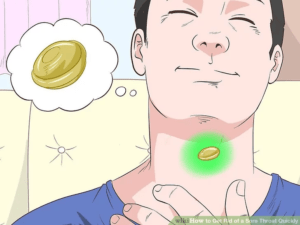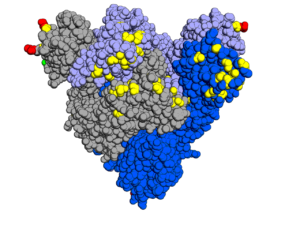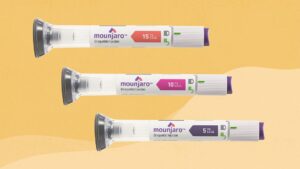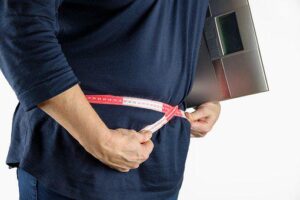गर्भावस्था और स्तनपान : COVID-19 से सुरक्षित रखने के लिए क्या करें?
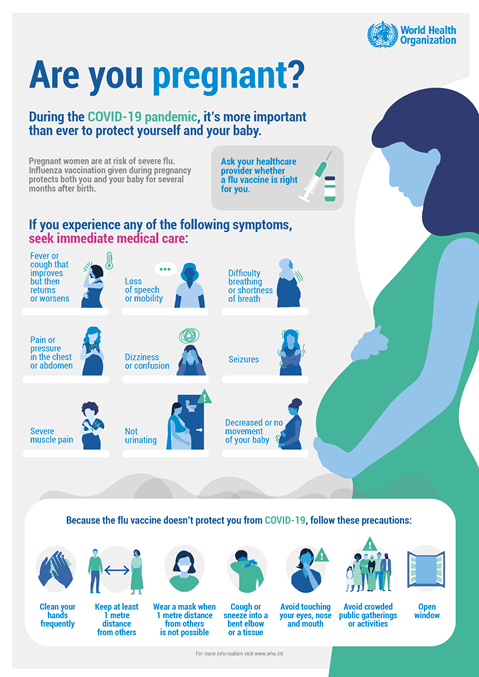
Pregnant and covid19
गर्भावस्था और स्तनपान : COVID-19 से सुरक्षित रखने के लिए क्या करें?
खुद को और दूसरों को COVID-19 से सुरक्षित रखने के लिए क्या करें? खांसने, छींकने या बोलने पर संक्रमण के जोखिम को कम करने के लिए अपने और दूसरों के बीच कम से कम 1 मीटर की दूरी बनाए रखें। घर के अंदर अपने और दूसरों के बीच और भी अधिक दूरी बनाए रखें। जितना दूर, उतना अच्छा। गर्भावस्था और स्तनपान
मास्क पहनना अन्य लोगों के आस-पास रहने का एक सामान्य हिस्सा बनाएं। मास्क को यथासंभव प्रभावी बनाने के लिए उचित उपयोग, भंडारण और सफाई या निपटान आवश्यक है।
यहां मास्क पहनने की मूल बातें दी गई हैं:
अपना मास्क लगाने से पहले, साथ ही इसे उतारने से पहले और बाद में, और किसी भी समय इसे छूने के बाद अपने हाथों को साफ करें।
सुनिश्चित करें कि यह आपकी नाक, मुंह और ठुड्डी दोनों को कवर करता है।
जब आप किसी मास्क को उतारते हैं, तो उसे एक साफ प्लास्टिक बैग में स्टोर करें, और हर दिन या तो इसे धो लें, अगर यह कपड़े का मास्क है या मेडिकल मास्क को कूड़ेदान में फेंक दें।
वॉल्व वाले मास्क का प्रयोग न करें।
किस प्रकार का मास्क पहनना है और कब हमारे प्रश्नोत्तर पढ़ें और हमारे वीडियो देखें, इस पर विशेष जानकारी के लिए। मास्क और बच्चों पर केंद्रित एक प्रश्नोत्तर भी है।
कृपया विज्ञान के बारे में अधिक जानें कि कैसे COVID-19 लोगों को संक्रमित करता है और हमारे शरीर इस साक्षात्कार को देखकर या पढ़कर प्रतिक्रिया करते हैं।
निर्णय लेने वालों के लिए विशिष्ट सलाह के लिए, WHO का तकनीकी मार्गदर्शन देखें।
What to do to keep yourself and others safe from COVID-19
- Maintain at least a 1-meter distance between yourself and others to reduce your risk of infection when they cough, sneeze or speak. Maintain an even greater distance between yourself and others when indoors. The further away, the better.
- Make wearing a mask a normal part of being around other people. The appropriate use, storage, and cleaning or disposal are essential to make masks as effective as possible.
Here are the basics of how to wear a mask:
- Clean your hands before you put your mask on, as well as before and after you take it off, and after you touch it at any time.
- Make sure it covers both your nose, mouth, and chin.
- When you take off a mask, store it in a clean plastic bag, and every day either wash it if it’s a fabric mask or dispose of a medical mask in a trash bin.
- Don’t use masks with valves.
- For specifics on what type of mask to wear and when read our Q&A and watch our videos. There is also a Q&A focused on masks and children.
- Please find out more about the science of how COVID-19 infects people and our bodies react by watching or reading this interview.
- For specific advice for decision-makers, see WHO’s technical guidance.
How to make your environment safer
-
- Avoid the 3Cs: spaces that are closed, crowded, or involve close contact.
- Outbreaks have been reported in restaurants, choir practices, fitness classes, nightclubs, offices, and places of worship where people have gathered, often in crowded indoor settings where they talk loudly, shout, breathe heavily or sing.
- The risks of getting COVID-19 are higher in crowded and inadequately ventilated spaces where infected people spend long periods of time together nearby. These environments are where the virus appears to spread by respiratory droplets or aerosols more efficiently, so taking precautions is even more important.
- Meet people outside. Outdoor gatherings are safer than indoor ones, particularly if indoor spaces are small and without outdoor air coming in.
- For more information on how to hold events like family gatherings, children’s football games, and family occasions, read our Q&A on small public gatherings.
- Avoid crowded or indoor settings, but if you can’t, then take precautions:
- Open a window. Increase the amount of ‘natural ventilation’ when indoors.
- WHO has published Q&As on ventilation and air conditioning for the general public and people who manage public spaces and buildings.
- Wear a mask (see above for more details).
- Avoid the 3Cs: spaces that are closed, crowded, or involve close contact.
Don’t forget the basics of good hygiene.
- Regularly and thoroughly clean your hands with an alcohol-based hand rub or wash them with soap and water. This eliminates germs, including viruses that may be on your hands.
- Avoid touching your eyes, nose, and mouth. Hands touch many surfaces and can pick up viruses. Once contaminated, hands can transfer the virus to your eyes, nose, or mouth. From there, the virus can enter your body and infect you.
- Cover your mouth and nose with your bent elbow or tissue when you cough or sneeze. Then dispose of the used tissue immediately into a closed bin and wash your hands. By following good ‘respiratory hygiene,’ you protect the people around you from viruses, which cause colds, flu, and COVID-19.
- Clean and disinfect surfaces frequently, especially those regularly touched, such as door handles, faucets, and phone screens.
What to do if you feel unwell
- Know the full range of symptoms of COVID-19. The most common symptoms of COVID-19 are fever, dry cough, and tiredness. Other symptoms that are less common and may affect some patients include loss of taste or smell, aches, pains, headaches, sore throat, nasal congestion, red eyes, diarrhea, or a skin rash.
- Stay home and self-isolate even if you have minor symptoms such as cough, headache, mild fever until you recover. Call your health care provider or hotline for advice. Have someone bring you supplies. If you need to leave your house or have someone near you, wear a medical mask to avoid infecting others.
- If you have a fever, cough, and difficulty breathing, seek medical attention immediately. Call by telephone first, if you can, and follow the directions of your local health authority.
- Keep up to date on the latest information from trusted sources, such as WHO or your local and national health authorities. Local and national authorities and public health units are best placed to advise what people in your area should be doing to protect themselves.


जब मां को COVID-19 हो तो नवजात शिशुओं की देखभाल करना
जबकि COVID-19 के साथ माताओं से पैदा हुए नवजात शिशुओं के लिए COVID-19 के जोखिमों के बारे में अभी भी बहुत कुछ अज्ञात है, हम जानते हैं कि:
COVID-19 उन माताओं से जन्म लेने वाले नवजात शिशुओं में असामान्य है, जिन्हें गर्भावस्था के दौरान COVID-19 था।
कुछ नवजात शिशुओं ने जन्म के तुरंत बाद COVID-19 के लिए सकारात्मक परीक्षण किया है। यह अज्ञात है कि क्या इन नवजात शिशुओं को जन्म से पहले, दौरान या बाद में वायरस मिला है।
COVID-19 के लिए सकारात्मक परीक्षण करने वाले अधिकांश नवजात शिशुओं में हल्के या कोई लक्षण नहीं थे और वे ठीक हो गए। हालाँकि, नवजात शिशुओं में गंभीर COVID-19 बीमारी की कुछ रिपोर्टें हैं।
अस्पताल में अपने नवजात शिशु की देखभाल करना यदि आपको COVID-19 का निदान या परीक्षण सकारात्मक है।
वर्तमान साक्ष्य बताते हैं कि नवजात शिशु को अपनी मां से कोविड-19 होने का जोखिम कम होता है, खासकर जब मां नवजात की देखभाल से पहले और उसके दौरान फैलने से रोकने के लिए कदम उठाती है (जैसे मास्क पहनना और हाथ धोना)।


तय करें कि आपका नवजात शिशु अस्पताल में आपके साथ है या नहीं।
अपने नवजात शिशु को अपने साथ एक ही कमरे में रहने के जोखिमों और लाभों के बारे में अपने स्वास्थ्य सेवा प्रदाता के साथ चर्चा करें। अपने नवजात शिशु को अपने साथ कमरे में रहने से स्तनपान कराने और माँ-नवजात शिशु के संबंध बनाने में मदद मिलती है। यदि संभव हो तो बच्चे के जन्म से पहले इस बातचीत को शुरू करें।
नवजात शिशु को पकड़े महिला
यदि आप COVID-19 के लिए आइसोलेशन में हैं और अपने नवजात शिशु के साथ एक कमरा साझा कर रहे हैं तो अपने नवजात शिशु के 6 फीट के दायरे में मास्क पहनें।
यदि आपका नवजात शिशु अस्पताल में आपके साथ है तो सावधानी बरतें।
यदि आप COVID-19 के लिए अलगाव में हैं और अपने नवजात शिशु के साथ एक कमरा साझा कर रहे हैं, तो अपने नवजात शिशु में वायरस फैलने के जोखिम को कम करने के लिए निम्नलिखित कदम उठाएं:
अपने नवजात शिशु को रखने या उसकी देखभाल करने से पहले अपने हाथों को साबुन और पानी से कम से कम 20 सेकंड तक धोएं। यदि साबुन और पानी उपलब्ध नहीं है, तो कम से कम 60% अल्कोहल वाले हैंड सैनिटाइज़र का उपयोग करें।
जब आप अपने नवजात शिशु के 6 फीट के दायरे में हों तो मास्क पहनें।
जितना हो सके अपने नवजात को अपने से 6 फीट से ज्यादा दूर रखें।
अपने स्वास्थ्य सेवा प्रदाता के साथ अपने नवजात शिशु की सुरक्षा के तरीकों के बारे में चर्चा करें, जैसे कि अस्पताल में रहने के दौरान शारीरिक अवरोध (उदाहरण के लिए, नवजात शिशु को इनक्यूबेटर में रखना) का उपयोग करना।
एक बार जब आपकी अलगाव अवधि समाप्त हो जाती है, तब भी आपको अपने नवजात शिशु की देखभाल करने से पहले अपने हाथ धोना चाहिए, लेकिन आपको अन्य सावधानी बरतने की आवश्यकता नहीं है। आपकी अलगाव अवधि समाप्त होने के बाद आप अपने नवजात शिशु या किसी अन्य करीबी संपर्क में वायरस को पारित नहीं करेंगे।


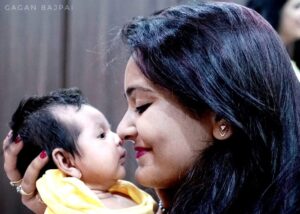
यदि आपके लक्षण थे, तो आपकी अलगाव अवधि समाप्त हो जाती है:
लक्षण पहली बार प्रकट होने के 10 दिन बाद, और
बिना बुखार के 24 घंटे, बुखार कम करने वाली दवाओं के बिना, और
COVID-19 के अन्य लक्षणों में सुधार हो रहा है।
यदि आपको कभी लक्षण नहीं थे, तो आपकी आइसोलेशन अवधि समाप्त हो जाती है
आपके सकारात्मक COVID-19 परीक्षण की तारीख को 10 दिन बीत चुके हैं।
घर पर अपने नवजात शिशु की देखभाल करना अगर आपको COVID-19 का निदान या परीक्षण सकारात्मक है।
यदि आप COVID-19 के लिए आइसोलेशन में हैं, तो आपकी आइसोलेशन अवधि समाप्त होने तक निम्नलिखित सावधानियां बरतें:
अपने घर से बाहर खुद को दूसरों से अलग करने के लिए घर पर ही रहें।
घर के अन्य सदस्यों से अलग (दूर रहें) जो संक्रमित नहीं हैं, और साझा स्थानों पर मास्क पहनें।
एक स्वस्थ देखभाल करने वाला व्यक्ति है जो गंभीर बीमारी के लिए जोखिम में नहीं है, अपने नवजात शिशु की देखभाल करें।
देखभाल करने वालों को अपने नवजात शिशु को छूने से पहले कम से कम 20 सेकंड तक हाथ धोना चाहिए। यदि साबुन और पानी उपलब्ध नहीं है, तो कम से कम 60% अल्कोहल वाले हैंड सैनिटाइज़र का उपयोग करें।
यदि देखभाल करने वाला एक ही घर में रह रहा है या आपके निकट संपर्क में रहा है, तो हो सकता है कि वे उजागर हो गए हों। जब वे आपके नवजात शिशु के 6 फीट के भीतर हों, जब तक आप अलगाव में हों, और अपने स्वयं के संगरोध के दौरान, जब आप अपना अलगाव पूरा कर लें, तो उन्हें मास्क पहनना चाहिए।
यदि एक स्वस्थ देखभाल करने वाला उपलब्ध नहीं है, तो आप अपने नवजात शिशु की देखभाल कर सकते हैं यदि आप पर्याप्त रूप से स्वस्थ हैं।
अपने नवजात शिशु को छूने से पहले अपने हाथों को साबुन और पानी से कम से कम 20 सेकंड तक धोएं। यदि साबुन और पानी उपलब्ध नहीं है, तो कम से कम 60% अल्कोहल वाले हैंड सैनिटाइज़र का उपयोग करें।
अपने पूरे अलगाव की अवधि के दौरान अपने नवजात शिशु और अन्य लोगों के 6 फीट के दायरे में मास्क पहनें। मास्क आपको दूसरों तक वायरस फैलाने से रोकने में मदद करता है।
आपके घर के अन्य लोग, और देखभाल करने वाले जिन्हें COVID-19 है, उन्हें अलग-थलग करना चाहिए और यथासंभव नवजात शिशु की देखभाल करने से बचना चाहिए। अगर उन्हें नवजात शिशु की देखभाल करनी है, तो उन्हें हाथ धोने और ऊपर दी गई मास्क की सिफारिशों का पालन करना चाहिए।
एक बार जब आपकी अलगाव अवधि समाप्त हो जाती है, तब भी आपको अपने नवजात शिशु की देखभाल करने से पहले अपने हाथ धोना चाहिए, लेकिन आपको अन्य सावधानी बरतने की आवश्यकता नहीं है। आपकी अलगाव अवधि समाप्त होने के बाद आप अपने नवजात शिशु या किसी अन्य करीबी संपर्क में वायरस को पारित नहीं करेंगे।
यदि आपके लक्षण थे, तो आपकी अलगाव अवधि समाप्त हो जाती है:
लक्षण पहली बार प्रकट होने के 10 दिन बाद, और
बुखार कम करने वाली दवाओं के बिना 24 घंटे बिना बुखार के, और
COVID-19 के अन्य लक्षणों में सुधार हो रहा है
यदि आपको कभी लक्षण नहीं थे, तो आपकी आइसोलेशन अवधि समाप्त हो जाती है
आपके सकारात्मक COVID-19 परीक्षण की तारीख को 10 दिन बीत चुके हैं
पृष्ठ के सबसे ऊपर
स्तनपान और COVID-19
वर्तमान साक्ष्य बताते हैं कि स्तन के दूध से शिशुओं में वायरस फैलने की संभावना नहीं है।
आपको, अपने परिवार और स्वास्थ्य सेवा प्रदाताओं के साथ, यह तय करना चाहिए कि स्तनपान कैसे शुरू करना है और कैसे जारी रखना है। मां का दूध कई बीमारियों से सुरक्षा प्रदान करता है और अधिकांश शिशुओं के लिए पोषण का सबसे अच्छा स्रोत है।
यदि आप स्तनपान करा रही हैं, तो आप एक COVID-19 वैक्सीन प्राप्त कर सकती हैं।
स्तनपान शुरू करने या फिर से शुरू करने के लिए उपयोगी टिप्स
यदि आप अस्पताल में अपने नवजात शिशु के साथ एक कमरा साझा नहीं कर रही हैं तो आपको स्तनपान शुरू करना या जारी रखना मुश्किल हो सकता है। यहां कुछ उपयोगी टिप्स दी गई हैं

